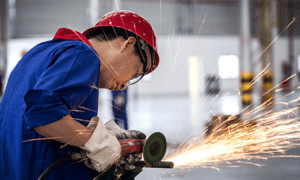Are driverless trains the future of transportation or a potential safety risk? As technology continues to advance, autonomous transport has become a hot topic of debate. In this blog post, we dive into the world of driverless trains and analyze their safety measures. Join us as we address concerns and shed light on the exciting possibilities that lie ahead for this innovative mode of travel. Get ready to have your perceptions challenged and discover how these futuristic marvels are revolutionizing public transportation!
Introduction to Autonomous Transport
When it comes to autonomous transport, there are a lot of concerns that need to be addressed. One of the main concerns is safety. Driverless trains have been involved in a few accidents, but are they really any more dangerous than traditional trains?
There have been a few studies conducted on the safety of driverless trains, and the results are mixed. Some studies show that driverless trains are just as safe as traditional trains, while other studies show that driverless trains are actually more dangerous. However, it’s important to keep in mind that these studies are still relatively new, and more research needs to be done in order to definitively say one way or the other.
Regardless of whether or not driverless trains are currently safe, it’s important to remember that safety is always improving. As technology advances, autonomous transport will become even safer. So, while there may be some concerns about the safety of driverless trains right now, those concerns should dissipate over time.
Benefits of Autonomous Train Technology
Recent technological advances have brought about a new era of transportation, one in which vehicles are increasingly autonomous. This has led to concerns about the safety of driverless vehicles, particularly trains.
Autonomous train technology offers several benefits that can help improve safety. First, autonomous trains can communicate with each other and with infrastructure, such as signals and switches. This allows them to coordinate their movements and avoid collisions.
Second, autonomous trains can generate real-time data that can be used to improve safety. For example, if an incident occurs, the data collected by the train can be used to investigate what happened and prevent similar incidents from happening in the future.
Third, autonomous trains can be equipped with advanced sensors that can detect potential hazards on the tracks or in the environment. This information can be used to route trains around hazards or take other measures to avoid accidents.
Autonomous train technology offers the potential for significant cost savings. For example, because they do not require drivers, autonomous trains do not need to pay salaries or benefits. In addition, they require less maintenance than traditional trains since there are no human operators who need breaks or time off. As a result, operational costs for driverless trains
Safety Concerns Around Autonomous Trains
There are a number of safety concerns that have been raised about autonomous trains. One concern is that these trains could collide if they are not properly coordinated. Another concern is that the sensors and cameras that these trains use to navigate could be fooled by objects on the tracks, leading to accidents. Additionally, there is a worry that hackers could take control of these driverless trains and cause them to crash.
Despite these concerns, there is no evidence that autonomous trains are any less safe than traditional trains. In fact, many of the safety concerns around autonomous trains are based on hypothetical scenarios that have not actually happened. And while it is possible for hackers to take control of driverless trains, this is also possible with traditional trains; it just requires more effort. In general, then, there is no reason to believe that driverless trains are any less safe than traditional ones.
Analyzing the Safety of Driverless Trains
There are many benefits to driverless trains, including improved safety. Driverless trains can operate more efficiently and with fewer mistakes than human-operated trains. However, some people are concerned about the safety of driverless trains.
There have been several accidents involving driverless trains, but these have generally been due to human error rather than any flaw in the technology. In most cases, the driverless system has operated as intended and prevented accidents from happening.
Driverless trains are much safer than human-operated trains. The technology is constantly improving, and there is no reason to believe that driverless trains will not become even safer in the future.
Current Regulations Governing Autonomous Trains
The operation of driverless trains is currently governed by a patchwork of regulations at the federal, state, and local levels. There are no nationwide standards governing the operation of autonomous trains, although the Federal Railroad Administration (FRA) has issued guidance on the use of automated technologies in rail operations.
State and local governments have begun to enact their own regulations governing autonomous trains. In September 2017, California became the first state to pass legislation specifically addressing autonomous trains, with a law that requires all driverless trains operating in the state to be equipped with an emergency stop button that can be activated by any passenger.
Other states are considering similar legislation. In December 2017, Michigan’s House of Representatives passed a bill that would allow driverless vehicles, including trains, on the state’s roads. The bill is currently under consideration in the state Senate.
There is also a patchwork of regulations at the local level. Several cities and counties have enacted ordinances prohibiting or regulating the operation of autonomous vehicles, including trains. For example, San Francisco has banned driverless vehicles from city streets, while Los Angeles has enacted regulations limiting their operation to certain areas.
Strategies for Achieving Higher Levels of Safety in Autonomous Train Systems
There are many strategies that can be employed to achieve higher levels of safety in autonomous train systems. Some of these include:
1. Improved track inspection and maintenance: Regular inspection and maintenance of tracks are essential to ensuring their safety and integrity. This is even more important in the case of driverless trains, as there is no driver present to react in the event of an issue.
2. Better sensors and data processing: The use of better sensors and improved data processing techniques can help improve the safety of driverless trains. This includes the use of sensors that can detect potential problems on the tracks ahead as well as improved data analysis to identify potential hazards.
3. Enhanced safety features: Various enhanced safety features can be employed to further improve the safety of driverless trains. These include things like automatic braking systems that can stop the train in the event of an emergency, as well as onboard computer systems that can take over control of the train if necessary.
4. Improved operator training: Proper operator training is essential for any type of railway system, but it is especially important in the case of driverless trains. Operators need to be properly trained in how to use all of the safety features that are available, as well as how to react in the event of an emergency situation.
Conclusion
Autonomous transport is an innovative technology that offers numerous advantages, including energy efficiency and improved safety. Despite the potential of autonomous trains, there are still many concerns related to their safety and reliability. However, with proper analysis and the implementation of technological advances such as machine learning algorithms, autonomous vehicles can be made even more secure than traditional trains by reducing the number of accidents and providing a safer journey for all passengers. As this technology continues to develop in the future, it will become increasingly important for governments and companies alike to address these concerns so that they can be taken into account during deployment.



































